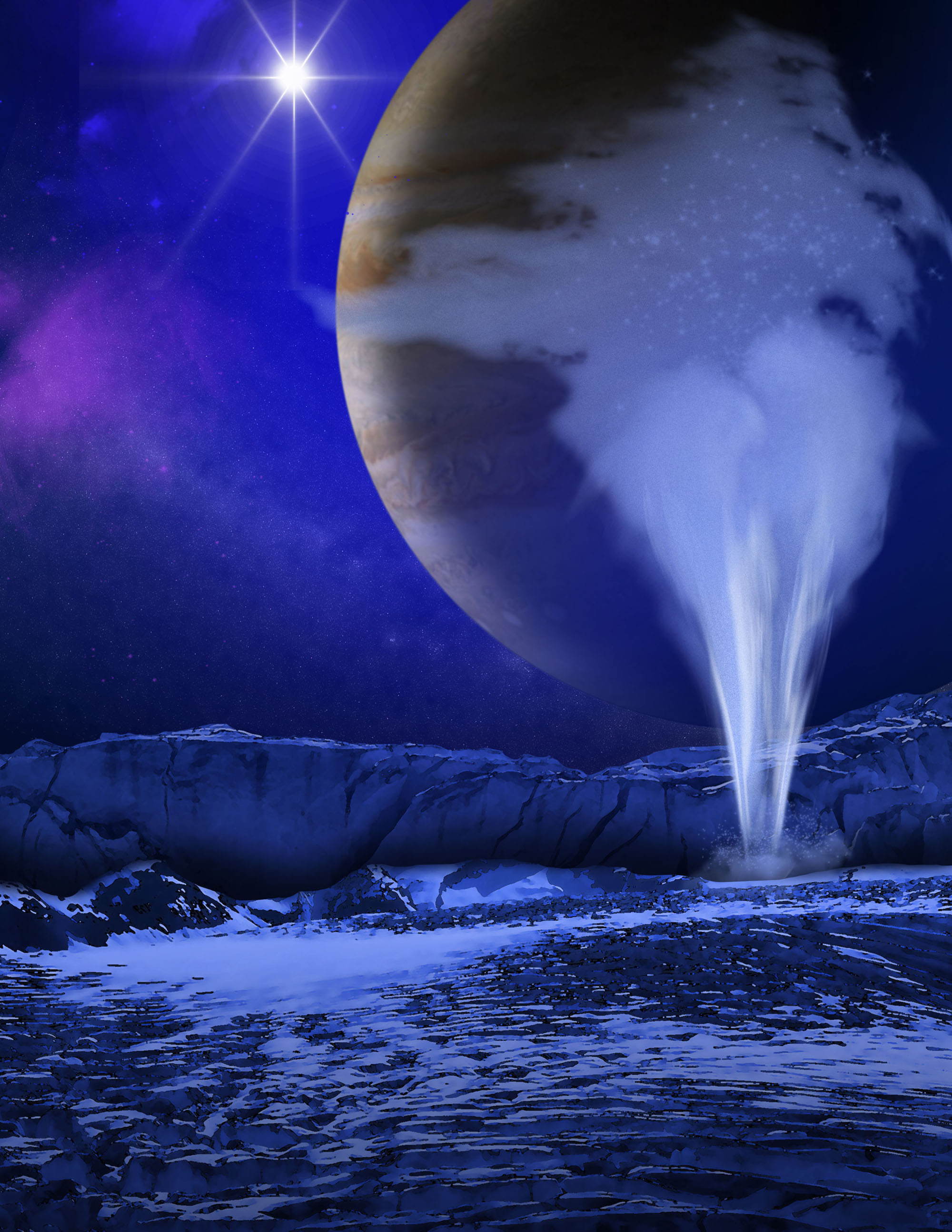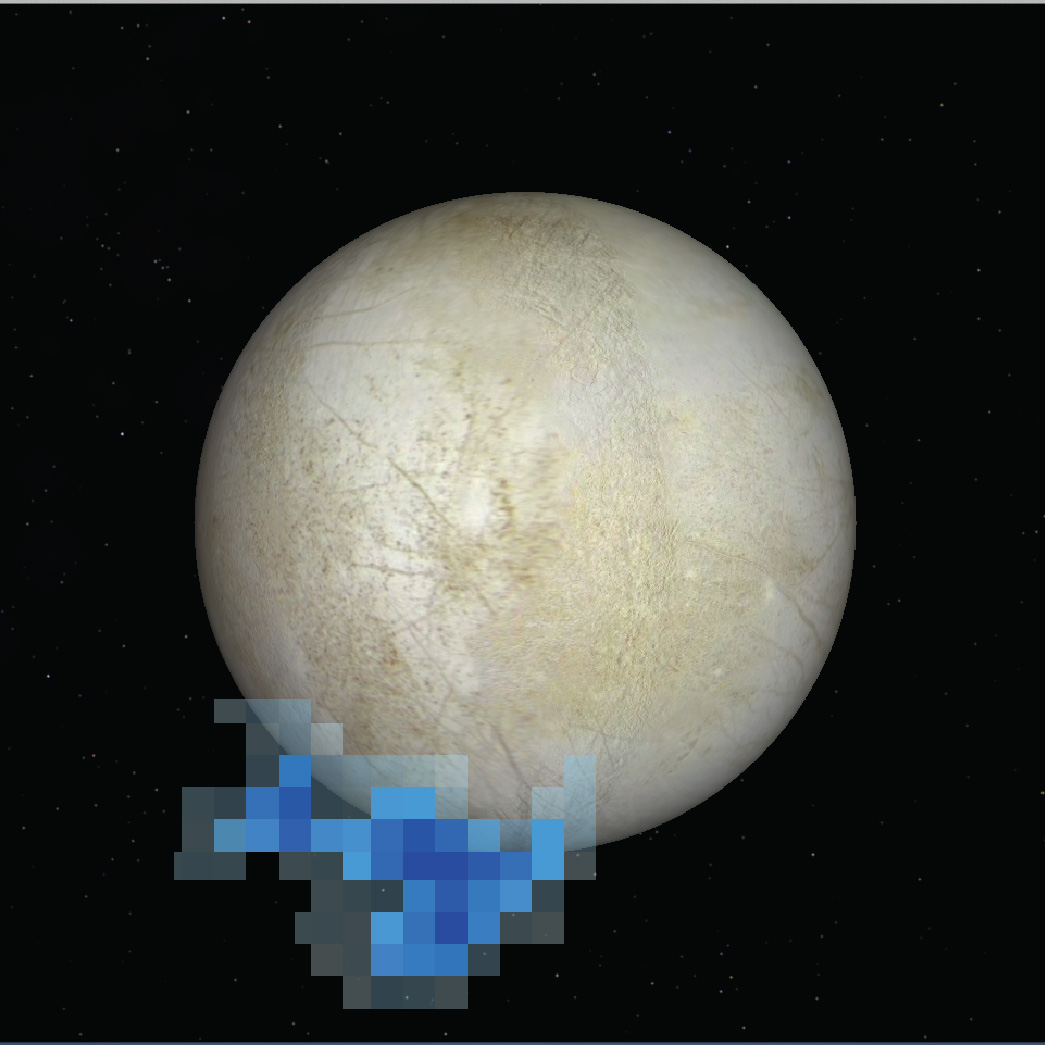
SAN FRANCISCO — The huge geysers on Jupiter's icy moon Europa have gone underground.
Late last year, scientists announced that NASA's Hubble Space Telescope had detected plumes of water vapor spewing about 120 miles (200 kilometers) into space from Europa's south pole in December 2012. The news was met with a great deal of excitement, as it suggested that a robotic probe may be able to sample Europa's possibly life-supporting subsurface ocean without touching down.
The researchers have trained Hubble on Europa repeatedly since then, trying to confirm and characterize the plumes during observations in January, February, November and December of this year. But they've come up empty. [Photos: Europa, Mysterious Icy Moon of Jupiter]
"We have not yet found any signals of waper vapor in the new images so far," team member Lorenz Roth, of the Southwest Research Institute in San Antonio, said Dec. 19 during a talk here at the annual fall meeting of the American Geophysical Union (AGU).

Other research teams have also failed to confirm the plumes. For example, a recent re-analysis of images gathered by NASA's Galileo probe, which studied the Jupiter system up close from 1995 through 2003, turned up no evidence of their existence, said Cynthia Phillips of the SETI (Search for Extraterrestrial Intelligence) Institute in Mountain View, California.
Europa's plumes are thus unlikely to resemble the famous powerhouse geysers that erupt continuously from the south pole of Saturn's icy moon Enceladus, which also harbors an ocean of liquid water beneath its icy shell, she said. (The two moons' oceans are kept liquid by heat-generating tidal forces, the same mechanism thought to power the geysers.)
"I find it hard to believe that if a plume that was similar to the plumes we see on Enceladus had been going off on Europa during the Galileo era — I find it really unlikely that we would have missed it," Phillips said during her talk at AGU on Dec. 19. "I think we would have seen that thing."
Get the Space.com Newsletter
Breaking space news, the latest updates on rocket launches, skywatching events and more!
Further, researchers announced on Dec. 18 at AGU that NASA's Cassini spacecraft, which flew by Jupiter in 2001 on its way to Saturn, also didn't see any plume activity at Europa at the time.
"We found no evidence for water near Europa, even though we have readily detected it as it erupts in the plumes of Enceladus," Larry Esposito of the University of Colorado at Boulder, team lead for Cassini's ultraviolet imaging spectrograph insturment (UVIS), said in a NASA statement.
UVIS measurements also suggest that most of the hot gas surrounding the satellite originates from the neighboring volcanic moon Io, not Europa, and that Europa's wispy atmosphere is 100 times less dense than thought, the study found.
However, none of this necessarily means that Europa's geysers don't exist.
"It is certainly still possible that plume activity occurs, but that it is infrequent or the plumes are smaller than we see at Enceladus," Cassini UVIS team member and study co-author Amanda Hendrix, of the Planetary Science Institute in Tucson, Arizona, said in the NASA statement. "If eruptive activity was occurring at the time of Cassini's flyby, it was at a level too low to be detectable by UVIS."
Indeed, the plume's discoverers had no expectation of constant and intense activity; Hubble observations in October 1999 and November 2012 did not detect any geysers, Roth said.
"It was clear from the beginning that this is a transient phenomenon," he said.
Roth counseled patience, describing the Hubble plume hunt as a work in progress. (The current search campaign should continue through April 2015.). Phillips voiced similar sentiments, saying that weak and/or intermittent plumes could have gone undetected by Galileo.
"The end result here is, stay tuned," Phillips said.
Follow Mike Wall on Twitter @michaeldwall and Google+. Follow us @Spacedotcom, Facebook or Google+. Originally published on Space.com.
Join our Space Forums to keep talking space on the latest missions, night sky and more! And if you have a news tip, correction or comment, let us know at: community@space.com.

Michael Wall is a Senior Space Writer with Space.com and joined the team in 2010. He primarily covers exoplanets, spaceflight and military space, but has been known to dabble in the space art beat. His book about the search for alien life, "Out There," was published on Nov. 13, 2018. Before becoming a science writer, Michael worked as a herpetologist and wildlife biologist. He has a Ph.D. in evolutionary biology from the University of Sydney, Australia, a bachelor's degree from the University of Arizona, and a graduate certificate in science writing from the University of California, Santa Cruz. To find out what his latest project is, you can follow Michael on Twitter.









